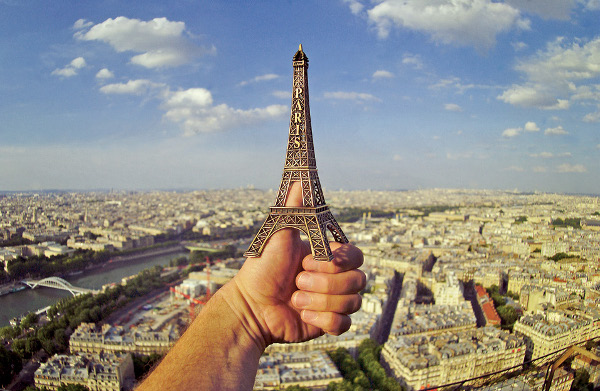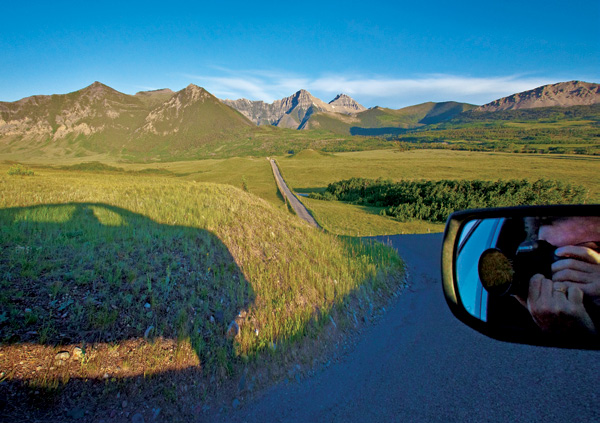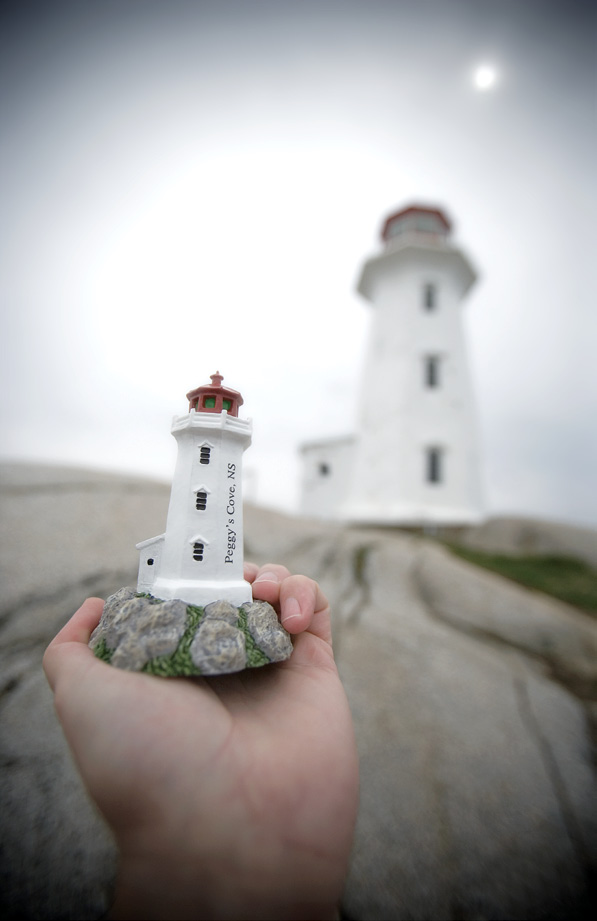Photography is all about communicating. Ideas, inspiration, location or sales pitch, an image can often communicate where words flounder. For that communication to be successful the photographer should know several languages, not verbal but conceptual. You must first be able to communicate to the camera what you see.
This language takes place by understanding the language of film or digital sensors. They do not speak the same language your eyes do (not even close). Film or sensors are far less capable of recording the range of light our eyes perceive. You compensate for that with filters, flash and post-production digital techniques. Our eyes can see detail from shadow to highlights, covering the equivalent of about 12 f/stops; compare this to slide film that was about 2 ½ f/stops, digital sensors at 4 to 5 f/stops and post production techniques like HDR (High Dynamic Range) that can surpass the range of human vision – covering whatever spread of multiple images you expose for.

Landscape Photography - Any type of light can be used creatively as a source of illumination and inspiration. my vehicle's high beams were directed across this field, casting a shadow on the bale. Pentax 645, Pentax 45mm lens, Fuji Provia 100 slide film.
Another language you must learn, that’s just as critical, is how to communicate what you have seen to the viewer. This one is a little trickier, as it often runs counter to our understanding. I am sure that you have had the experience of showing friends a favourite image, only to receive rather unimpressed reactions from the people you proudly showed that image to. First of all, there is nothing wrong with that – don’t let anyone tell you what is “good”. Hold to your instinct – if an image captures your heart, but no one else’s, you may assume that everyone else is heartless. However, keep in mind that one reason no one else seems to enjoy the image as powerfully as you do, may be because communication has broken down between you and the viewer. There are many ways this can happen, but it usually it has to do with context. You have the full range of context because you were at the location, and you recall all the sensory input, memories, emotions and experiences that accompany that image. In your mind, those are all woven into

Paris - Nothing needs to be said. This image communicates very clearly the scale, subject and place. Canon EOS-1Ds Mark II, Canon 16-35mm lens @ 16mm, f/2.8, polarizing filter.
the image and are almost impossible to separate from it. Your viewer has none of that wealth of background information – all they have is a print, or an image on a monitor, or a projected photograph. If the image was of the Grand Canyon, you might have memories of smelling juniper, you might feel the pounding of your heart from racing to the edge of the canyon to capture the last light of a fading sunset, or the spectacular beauty and scale of that grand landscape. Once you return home, you will no doubt excitedly show those images to friends and family and if you don’t communicate the scale of the scene effectively, they may not be able to tell if they are looking at the Grand Canyon – or a ravine in a gravel pit by the side of the road.

Reflection - Reflections are another way of including yourself in the composition. Glass buildings, looking down onto the surface of a lake, rear view mirrors or the mirror on a compass are some possibilities. Canon EOS 5D Mark II, canon 16-35mm lens @ 16mm, f/8, polarizing filter.
SCALE is one of the elements that is most frequently miscommunicated between photographer and viewer. This trick of perception can also be used to creative advantage when trying to engage a viewer’s interest, by making scale ambiguous, but it is more usually a mistake because the sense of scale that was meant to be seen is lost to the viewer. That image of the Grand Canyon that was so massive and made you feel so tiny standing next to it is completely lost on the viewer if there is nothing in the image that lets them interpret scale. It doesn’t take much, a few trees, something in the foreground, or, the absolute best thing you can ever include in an image to help convey scale, another human being!

Lighthouse, Peggy's Cove - Location and subject are very clear in this image, although scale might be a bit difficult to gauge as there is nothing close to the lighthouse to draw reference from. In this example, however, I felt content trumped scale, and it was far too windy to use the inflatable people. Canon EOS-1Ds Mark II, Canon 16-35 lens @ about 16mm, f/2.8.
We are intimately familiar with the human body and can recognize its’ form at great distance – often being able to tell male or female, child or adult. We are hard-wired to recognize this shape and make immediate connections to an image based on seeing another human in it.
There are other elements that can get lost in translation, a sense of DEPTH and SUBJECT are often lost in the communication between photographer and viewer. It is a difficult language to learn, but if you can try to separate all of your emotional context to an image, and attempt to see it alone from memory, you might be able to imagine how others see your images and possibly recognize where the breakdown in communication can occur.
One of the troubles I often have comes from travelling alone. There is rarely anyone around to include in the landscape. I tried carrying around some of those blow-up inflatable people but they turned out to be very unreliable. Any kind of wind at all and they would just blow over; nailing them to the ground caused deflation, and when travelling abroad, customs agents always gave me weird looks when they found a family of inflatables in my baggage.
I have since resorted to finding ways to include myself in the image to either help communicate scale, or add a human element into the composition. There are many ways to do this: set your camera on a tripod with a self-timer; include your shadow; look for your reflection in a mirror, or get your hands or feet into the scene by using an extreme wide angle lens.
I always enjoy images more when I recognize a mind at work behind the camera. It is not just a matter of being at the right place at the right time with an understanding of how to use technology – that’s expected these days, and is just the price of admission. Finding ways to creatively include a human element in a photograph goes a long way to connecting and communicating with the viewer, and helps to show that there is somebody present and thinking on the other side of all that technology!

Boardwalk to Western Brook Pond, Gros Morne National Park, Newfoundland - At sunrise and sunset the skies can be very dramatic, but not just in the direction of the sun - sometimes the most interesting images can be behind you. Image cropped to create a panoramic. Canon EOS-1Ds Mark II, Canon 16-35mm lens @ about 16mm, f/11.
article by Daryl Benson
| PHOTONews on Facebook | PHOTONews on Twitter |








